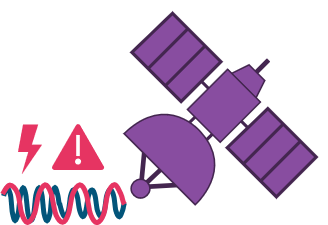
-
StatusCompleted
-
Status date2025-01-28
-
Activity Code6B.126
The objective of this project is to create a solution for detecting RF impairments with machine learning, integrated into a passive RF receiver system, and achieve TRL6 for this scope. The project was broken down into four categories of problems
-
Transmitter impairment recognition
-
Event and scenario recognition
-
Channel condition recognition
-
Specific emitter identification.
Key challenges included:
-
The design and development of realistic datasets for the project problems,
-
Selecting appropriate algorithmic solutions that would be relevant for the space environment,
-
Building a testbed for dataset creation as well as classifying and quantifying impairments in real-time
Technical challenges include handling of large datasets, automated training, orchestrating multiple training targets, and implementing the model in an inference solution that is suitable for a range of commercially available software radio technologies.
Deep learning for impairment recognition unlocks a more informed understanding of signal and channel conditions in support of any interventions that can be implemented to improve signal quality and reduce degradation.
The solution demonstrated learned methods can be produced and deployed in short development and iteration cycles with the appropriate tooling in place. Such tooling, leveraging Qoherent’s Radio Intelligence Applications platform, can help produce solutions that can perform on a broader set of conditions than traditional analytically derived solutions.
An application reference was also developed, RF Fingerprinting, which leverages transmitter impairments. RF fingerprinting can be used for tasks such as:
-
Satellite constellation or fleet identification
-
Specific emitter identification
-
Authentication of signals from the physical waveform.
Dataset synthesis and model production tools for training models for 4 categories of impairment recognition problems. These low parameter count, low-inference time models have the ability to ability to classify and quantify a range of impairments. They can be readily deployed into a cross-platform inference application.
The technology was built around low parameter count models (<1M) trained with a combination of synthetic and testbed-generated data. The data was produced with RIA tools for procedural recording generation and testbed control.
Models are loaded into an inference application that is cross platform, having been tested on a range of hardware targets, software-defined radios, and operating systems.
Testbeds included a combination of transmitters and receivers orchestrated to produce desired signal conditions for model training.
The project plan included work packages for (1) Developing project tooling such as development of signal generation and synthesis software (2) Recording capture and synthesis, then curation into datasets (3) Model training. (4) Model training and testing in software environments. (5) Model training and testing in an over-the-air capture environment, (6) Adapting the previous works to a new challenge (RF fingerprinting) and (7) integrating the findings into Qoherent’s RIA platform.
The project was completed in 2024 and successfully created machine learning models and the software to produce them for all 4 impairment categories, including reference workflows for each that can be used in all future Qoherent products and services.
During the project Qoherent produced:
-
New implementations of ML signal classifiers and regressors were developed. A new flagship model architecture was identified, suitable for space applications, which is being used for most Qoherent space-related activities.
-
In total, 30 models and corresponding datasets were developed over hundreds of training runs across all 4 categories.
-
Datasets included training data, challenge data, and unseen data.
-
Qoherent filed 4 provisional patent applications or Patent Cooperation Treaty Applications. The project contributed heavily to these.



